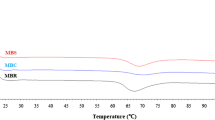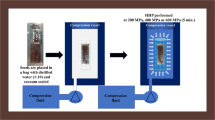Abstract
Sesame seeds were boiled and allowed to sprout under ambient condition (30±2 °C) with an objective to reduce or eliminate the bitter taste associated with them. The untreated seeds were used as a control. The proximate composition, functional and organoleptic properties of defatted sesame flour were assessed at room temperature. There was a slight increase (about 10%) in protein content of sprouted seeds. The foaming capacity of flours from untreated, sprouted and boiled seeds were 34.6, 38.5 and 11.5%, respectively. The flour from the boiled seeds had the highest foam stability. Flours from untreated or sprouted seeds, gelation started at the least concentration of 6% whereas that from boiled seed was 11%. The emulsion capacity of flours from the untreated or sprouted seeds was the same (27.6 g oil/g sample) while that from boiled seeds was 12.9 g oil/g sample. Emulsion stability with prolonged storage appeared to be more with flours from the sprouted or boiled seeds than that from the untreated ones. The water absorption properties of flours from the untreated, sprouted and boiled seeds were 8.0, 5.9 and 6.5 g H2O/g sample, respectively whereas the oil absorption capacity same (5.9 g oil/g sample). The bitter taste in flours from the untreated or sprouted was high. The bitter taste was not detected in flour from boiled seeds and the functional properties of the flour were not deleteriously affected except foaming and emulsion capacity. Therefore, this boiling method of debittering sesame seed could be practised. The quality of sesame flour obtained with this boiling method could still serve its role in traditional dishes and in the formulation of some other conventional food products.
Similar content being viewed by others
References
Oresanya MO, Koleoso QA (1990) Processing of beniseed (sesame) for oil and infant weaning food: sesami-ogi. Research Report 70, FIIRO, Nigeria.
Yen GC, Shyu SL (1989) Oxidative stability of sesame oil prepared from sesame seed with different roasting temperature. Food Chem 31: 215–224.
AOAC (1984) Official methods of analysis, 14th ed. Washington, DC: Association of Official Analytical Chemists.
Lawhon JT, Carter CM, Mattil KF (1972) A comparative study of the whipping potential of an oil extract from oilseed flours. Cereal Sci Today 17: 240–294.
Lin MJY, Humbert ES, Sosulski FW (1974) Certain properties of sunflower meal products. J Food Sci 39: 368–370.
Coffman CM, Gracia VV (1977) Functional properties and amino acid content of a protein isolate from mung beans flour. J Food Technol 12: 473.
Sathe SK, Salunkhe DK (1981) Functional properties of the Great Northern bean (Phaseous vulgaris L.) protein: emulsion, foaming, viscosity and gelation properties. J Food Sci 46: 71–74.
Okozie BO, Bello AB (1988) Physicochemical and functional properties of winged bean flour and isolate compared with soy isolate. J Food Sci 53: 450–455.
Ihekoronye AI, Ngoddy PO (1985) Integrated food science and technology for the tropics. London: Macmillan Press.
Hsu DL, Leung MK, Morad MM, Finney PI, Leung CI (1982) Effect of germination on electrophoretic, functional and bread-baking properties of yellow pea, lentil and faba bean protein isolate. Cereal Chem 59: 344–350.
Wassef EA, Palmer GH, Peston MG (1989) Protease digestion of the meals of ungerminated and germinated soya beans. J Sci Food Agric 44: 201–214.
Vanderstoep J (1981) Effect of germination on the nutritive value of legumes. Food Technol 35: 83–85.
Kinsella JE (1979) Functional properties of soy proteins. J Am Oil Chem Soc 56: 244–258.
Poole S (1989) Review: The foam-enhancing properties of basic biopolymers. Int J Food Sci Tecnol 24: 121–137.
Desphpande SS, Sathe SK, Cornforth DP, Salunkhe DK (1982) Effects of dehulling on functional properties of dry bean (Phaseolus vulgaris L.) flours. Cereal Chem 59: 396–401.
Inyang UE, Nwadimkpa CU (1982) Functional properties of dehulled sesame (Sesamum indicum L.) seed flour. J Am Oil Chem Soc 69: 819–822.
Abbey BW, Ibeh GO (1988) Functional properties of raw and heated processed cowpea (Vigna unguiculata). J Food Sci 53: 1775.
Sosulski FW, Fleming SE (1977) Chemical, functional and nutritional properties of sunflower protein production. J Am Oil Chem Soc 54: 100A.
Puski G (1971) Modification of functional properties of soy proteins by proteolytic enzyme treatment. Cereal Chem 52: 655.
Author information
Authors and Affiliations
Rights and permissions
About this article
Cite this article
Badifu, G.I.O., Akpagher, E.M. Effects of debittering methods on the proximate composition, organoleptic and functional properties of sesame (Sesamum indicum L.) seed flour. Plant Food Hum Nutr 49, 119–126 (1996). https://doi.org/10.1007/BF01091968
Received:
Accepted:
Issue Date:
DOI: https://doi.org/10.1007/BF01091968




